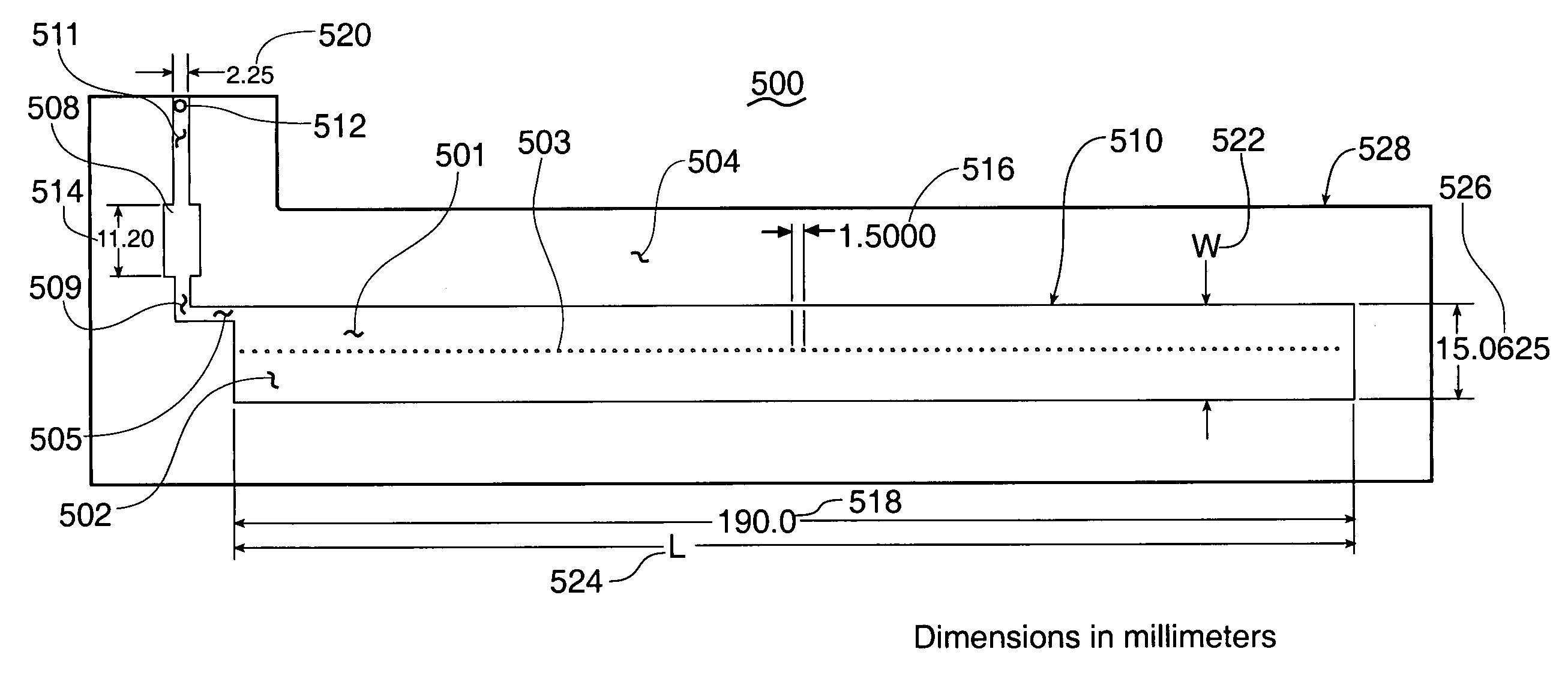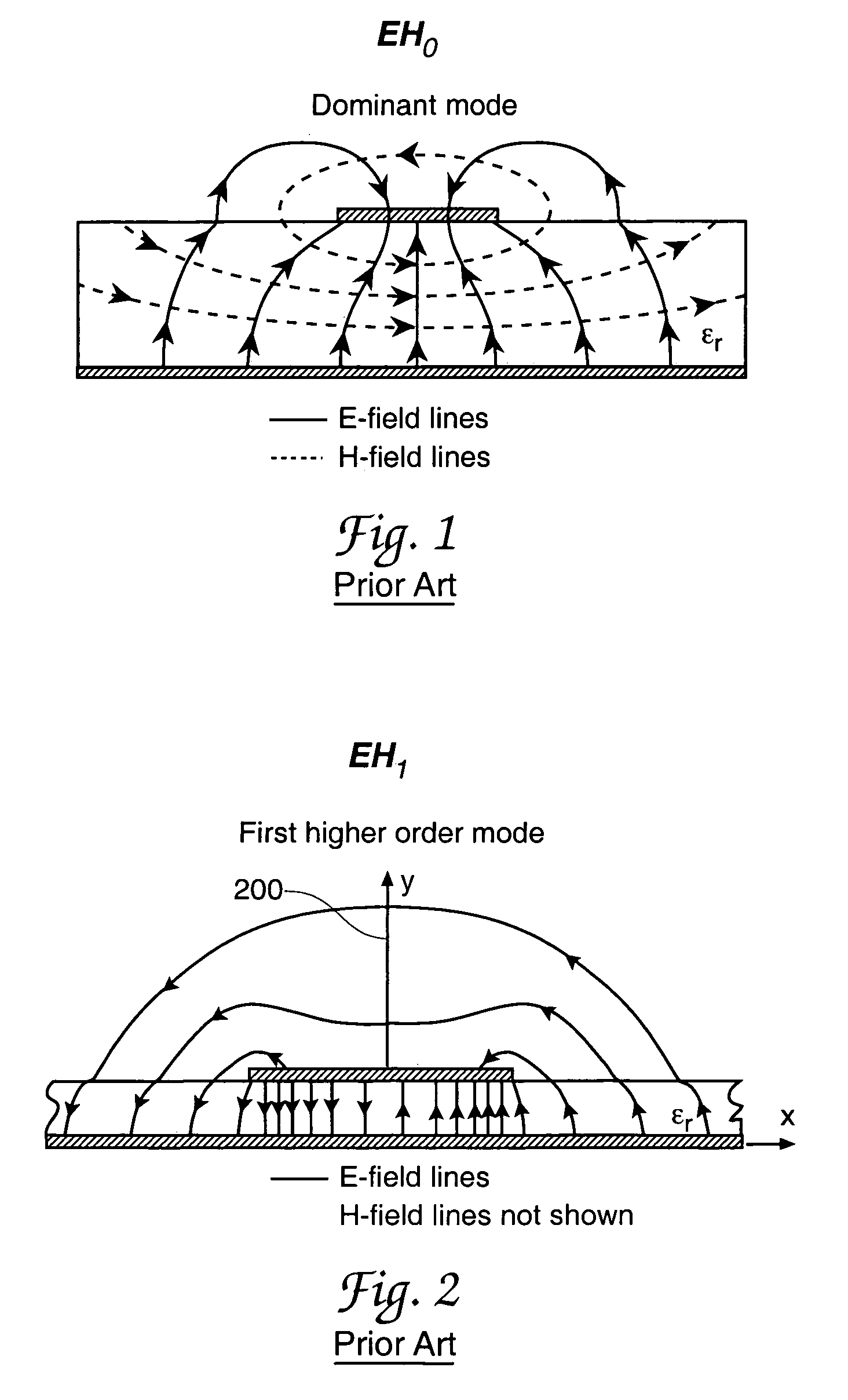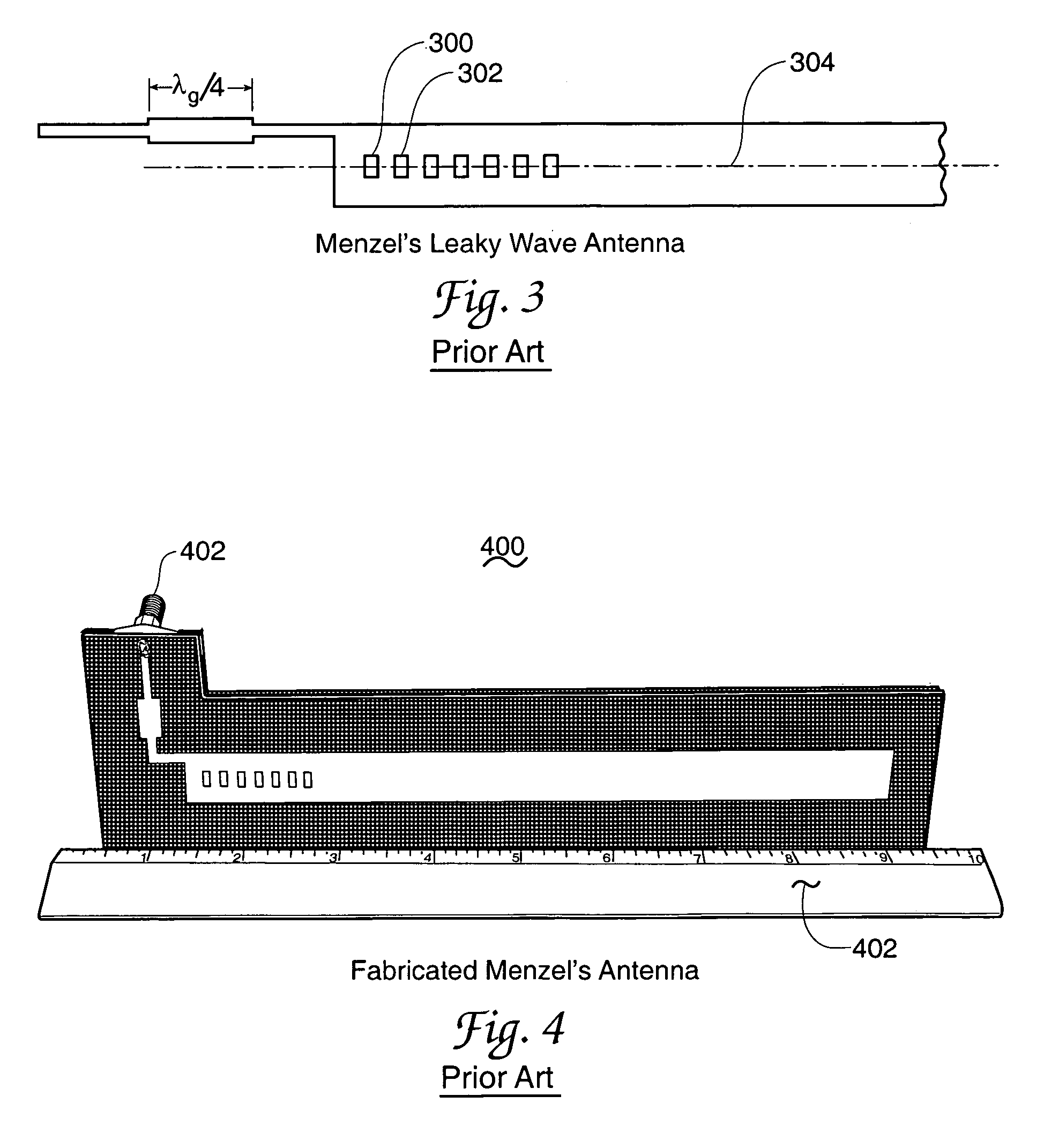Conformal microstrip leaky wave antenna
a leaky wave antenna and microstrip technology, applied in the direction of leaky waveguide antennas, antenna details, antennas, etc., can solve the problems of reducing efficiency, reducing the relative narrowness of such antennas, and reducing efficiency, so as to improve the leaky wave traveling wave antenna array, reduce the emission of undesirable cross polarized radiation components, and facilitate feeding
- Summary
- Abstract
- Description
- Claims
- Application Information
AI Technical Summary
Benefits of technology
Problems solved by technology
Method used
Image
Examples
Embodiment Construction
[0059]The antenna of the present invention is an inherently wide bandwidth antenna belonging to the general class of traveling wave antennas. Such traveling wave antennas also include the Beverage-can antenna and the rhombic antenna for examples. Antennas of this type utilize a load element at the end of the antenna to dampen undesirable back energy wave reflections and thus have a limit on their efficiency since the energy dissipated in this load is not radiated. As these antennas become electrically longer however, the main beam of the antenna desirably squints towards the direction of propagation and this characteristic tends to overcome the load energy loss. An enlightening overview of wide bandwidth antennas is disclosed in reference [3] herein; this reference and each of the other references identified in this document are hereby incorporated by reference herein.
[0060]The presently desired performance aircraft conformal version of a traveling wave antenna can be implemented us...
PUM
 Login to View More
Login to View More Abstract
Description
Claims
Application Information
 Login to View More
Login to View More - R&D
- Intellectual Property
- Life Sciences
- Materials
- Tech Scout
- Unparalleled Data Quality
- Higher Quality Content
- 60% Fewer Hallucinations
Browse by: Latest US Patents, China's latest patents, Technical Efficacy Thesaurus, Application Domain, Technology Topic, Popular Technical Reports.
© 2025 PatSnap. All rights reserved.Legal|Privacy policy|Modern Slavery Act Transparency Statement|Sitemap|About US| Contact US: help@patsnap.com



